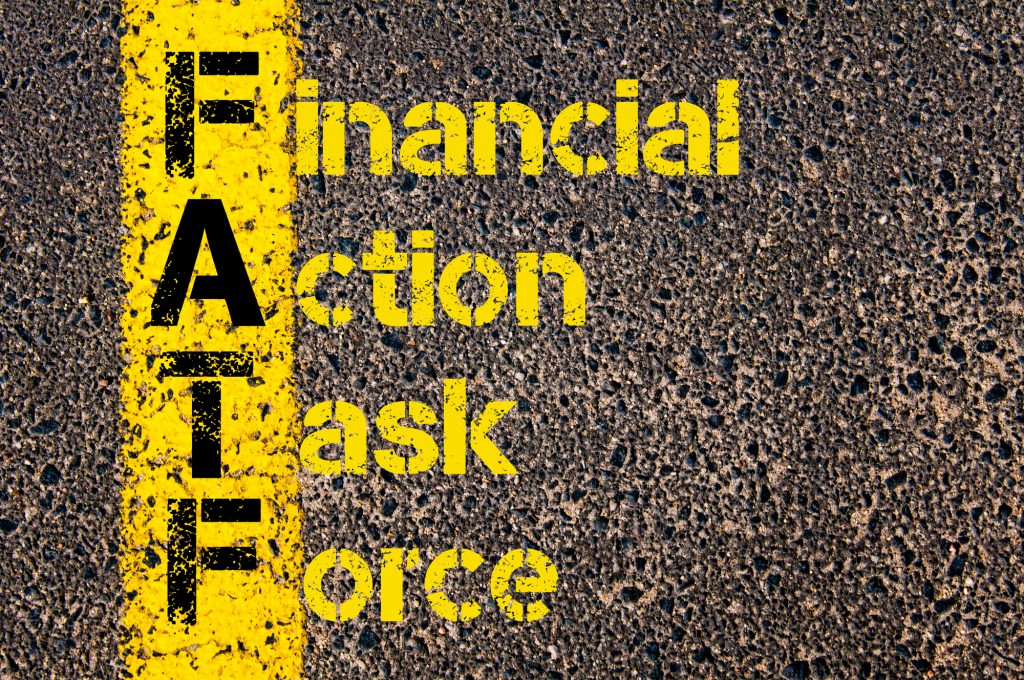For the past three months China has been caught in a crypto-storm, with those operating within the crypto-industry struggling to keep their heads above the water in a sea of uncertainty.
Last week, the notion of ‘blockchain not bitcoin’ resurfaced as the financial regulator in the city of Weihai warned investors to differentiate between blockchain and bitcoin. China’s position on crypto seems clear but, when reviewing all that has occurred since October, may there just be a light at the end of the storm?
A Good Forecast
On the 24th of October, President Xi Jinping, spoke at the eighteenth collective study on trends within blockchain technology and called for an increase in the development of blockchain technology and digital currencies. During his speech, Xi underlined the multifarious uses and benefits of blockchain technology and stressed the need for China to remain at the cusp of innovation as other nations were “stepping up efforts in planning blockchain technology developments”. Following, Xi’s statements on blockchain technology and bitcoin were removed by regulators from a list of industries that were listed to be outlawed.
Within forty-eight hours, President Xi’s call was duly acted upon by the National Peoples Congress (NPA), who passed an updated version of the State Cryptography Administration (SCA) blueprint; initially drafted in 2017. The purpose of the law is and will be to provide a framework for the regulation of cryptography for public and commercial use. With the legal backbone in place, China aims to continue its fervent pursuit of establishing itself as a technological leader; with the development of their own central bank digital currency seemingly of the greatest magnitude. The new cryptography law is set to come into effect on the 1st of January 2020.
To many a crypto-trader, Xi’s comments coupled with the NPA’s new law, was music to one’s ears. Reflecting this enthusiasm bitcoin, having just started to climb out of a three-month low, increased a drastic 26%, trading briefly over $10’000 in response to the news. Analysts within the industry rejoiced at Xi’s stance with Marouane Garcon of the crypto-trading platform Amulet claiming that “[Xi’s] green light will cause a ripple effect across China.” However, this initial swell of enthusiasm was rapidly swept aside as authorities got wind of how Xi’s statements were interpreted by the crypto community.
The Tempest
A mere week later, on the 4th of November, the South China Morning Post reported that the state-backed paper People’s Daily had made an official clarification “Blockchain technology innovation does not mean speculating on virtual currency.” The statement made by the People’s Daily reaffirmed the initial stance that China has held towards cryptocurrencies outlined in Peoples Bank of China’s (PBoC) 2017 notice, which explicitly banned all initial coin offerings (ICO’s), all crypto-to-fiat exchanges and any involvement in cryptos by financial institutions.
Within a fortnight of the People’s Daily article, the PBoC’s branch in Shanghai asked for local government agencies to assist crypto-related companies to discontinue their operations and the Beijing financial regulatory authority issued a warning against all crypto-exchange activities. Following suit, the Shenzhen Municipal Leading Group Office for Internet Financial Risk initiated its own investigatory campaign into illegal crypto-related undertakings; identifying 39 crypto-exchanges that were operating illegally.
Subsequently, after ‘corrective actions’ were taken in Shanghai, Beijing and Shenzhen, the PBoC released it’s Financial Stability Report (2019), claiming that “173 domestic virtual currency trading and token issuing financing platforms have all exited without risk”. Whether these numbers pertain directly to the crackdown initiated through the 13th -22nd of November is unclear. However, what is known is that five crypto exchanges have ceased operations (Bitsoda, Akdex, Idax, Btuex and Biss) as a result of the imminent crackdown; with Binance and Tron’s Weibo accounts being suspended and Binance’s Shanghai offices subject to a police raid.
The outcome of this demonstration of autocratic clout was naturally reflected in the market. Coinciding with the crackdown in China, bitcoin dropped to a six-month low, trading at $6'560 at 07:00 CET, continuing a record 11-day losing streak. In China, the message intended to be conveyed by the authorities was clear, the renminbi is the only valid legal tender and crypto’s pose a direct threat to convertibility and ease of carrying out foreign transfers. Blockchain is the name of the game and bitcoin should very much be swept aside.
A Silver Lining
Yet, amid all this turbulence, revealing information regarding state of blockchain in China surfaced. According to Zhu Xidong, the president of the Beijing Blockchain Technology Application Association (BBAA) 89% of Chinas blockchain companies are developing cryptocurrencies. For a country seemingly intent upon eradicating non-state-backed ‘virtual currencies’ the number of companies engaged in crypto suggests differently.
Furthermore, over the two years there have been legal developments in China that may hint at more open stance towards crypto’s in the future. In October 2018, The Futian District People’s Court of Shenzhen was the first court to attribute property status to Bitcoin, with the arbitrator at the Shenzhen Court of International Arbitration stating “…there are no laws and regulations that explicitly prohibit parties from holding bitcoins or conducting bitcoin transactions between individuals. […] Bitcoin has property attributes, can be controlled and controlled by manpower, has economic value, and can bring economic benefits to the parties.”
Lastly, in July of this year, the Hangzhou Internet Court become the second court that bestowed legal recognition to Bitcoin. Here too, Bitcoin was described as a being a virtual property, as it met the legal requirements to be considered as such. The reasoning is that bitcoin is “valuable, scarce and disposable.” Both these court cases, coupled with the report by the BBAA, suggests that the relationship between China and cryptos may not all be what it seems.
Overcast, the New Norm
Thus, with the turn of the decade quickly approaching, little seems certain in China’s relationship with bitcoin and the crypto universe. Although steps have been made over the past year that suggest China may have had a change of heart, such premonitions have been quickly silenced. “The green reed which bends in the wind is stronger than the mighty oak which breaks in a storm”, said the Chinese thinker Confucius; yet with the ever turbulent tides in China set to persist, it remains to be seen whether the nimble ships of the crypto-traders can navigate such stormy a sea. For now the winds howl, the ocean churns and the clouds hang darkly in the sky and China’s stance on crypto remains an impenetrable shade of grey.
Citations:
Bovaird, Charles. “Bitcoin Declines In November As Chinese Euphoria Fades.” Forbes, Forbes Magazine, 7 Dec. 2019, www.forbes.com/sites/cbovaird/2019/12/09/bitcoin-declines-in-november-as-chinese-euphoria-fades/#32d76b541c8f.
CCTV. “Fintech, Regulatory Technology and Blockchain Blue Book Release: Online Fraud Market Size Reaches 110 Billion.” _新闻频道_央视网(Cctv.com), 21 Nov. 2019, news.cctv.com/2019/11/21/ARTIeCiBbDlI9gBNSLeAHL5x191121.shtml.
Coindesk. “Bitcoin Price Index — Real-Time Bitcoin Price Charts.” CoinDesk, 25 Nov. 2019, www.coindesk.com/price/bitcoin.
Huang, Zheping, and Olga Kharif. “China’s Crackdown on Cryptocurrencies Claims First Victims.” Bloomberg.com, Bloomberg, 27 Nov. 2019, www.bloomberg.com/news/articles/2019-11-27/all-you-need-to-know-about-china-s-latest-crypto-crackdown.
Huillet, Marie. “China: 5 Crypto Exchanges Halt or Shut Services Amid Perceived Crackdown.” Cointelegraph, Cointelegraph, 30 Nov. 2019, cointelegraph.com/news/china-5-crypto-exchanges-halt-or-shut-services-amid-perceived-crackdown.
Lam, Eric. “Bitcoin Flirts With $10,000 After China Endorses Blockchain.” Bloomberg.com, Bloomberg, 28 Oct. 2019, www.bloomberg.com/news/articles/2019-10-28/bitcoin-flirts-with-10-000-after-china-endorses-blockchain.
Li, Cao. “China Gives Digital Currencies a Reprieve as Beijing Warms to Blockchain.” The New York Times, The New York Times, 6 Nov. 2019, www.nytimes.com/2019/11/06/business/china-bitcoin.html.
Lindsey, Nicole. “China’s New Encryption Law Highlights Cryptography as a Strategic Priority.” CPO Magazine, CPO Magazine, 10 Nov. 2019, www.cpomagazine.com/data-protection/chinas-new-encryption-law-highlights-cryptography-as-a-strategic-priority/.
O’Neal, Stephen. “Bitcoin Is Property, Chinese Court Rules — No Crypto Ban Contradiction.” Cointelegraph, Cointelegraph, 24 July 2019, cointelegraph.com/news/bitcoin-is-property-chinese-court-rules-no-crypto-ban-contradiction.
Pan, David. “Chinese City Warns Investors: Crypto Isn’t Blockchain.” CoinDesk, CoinDesk, 16 Dec. 2019, www.coindesk.com/chinese-city-warns-investors-crypto-isnt-blockchain.
Peoples Bank of China. “China Financial Stability Report 2019.” China Financial Stability Report 2019, Peoples Bank of China, 25 Nov. 2019, www.pbc.gov.cn/goutongjiaoliu/113456/113469/3927456/2019112517462728956.pdf.
Qu, Tracy. “Chinese State Media Draws Line between Blockchain and Cryptocurrencies.” South China Morning Post, 4 Nov. 2019, www.scmp.com/tech/policy/article/3036208/chinese-state-media-warns-blockchain-push-not-green-light-speculation.
Sanyan Finance. “Shenzhen Found 39 Companies Suspected of Illegal Virtual Currency Activities.” 深圳摸排出39个涉嫌开展虚拟货币非法活动的企业_手机搜狐网, 22 Nov. 2019, m.sohu.com/a/355351861_100117963/?pvid=000115_3w_a.
Shenzhen International Court of Arbitration. “Shenzhen Guozhong Case Selection | Bitcoin Arbitration Case.” 微信公众平台, Shenzhen International Court of Arbitration, 25 Oct. 2018, mp.weixin.qq.com/s/U_qDgQN9hceLBbpQ13eEdQ.




